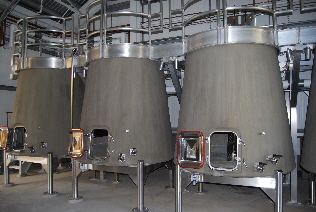 If I learned anything from watching Grease, its that a cute little blond girl should fall in love come summer, get hot and steamy under the dock at the beach, and then sing about it to the world with some nasal background vocals.
If I learned anything from watching Grease, its that a cute little blond girl should fall in love come summer, get hot and steamy under the dock at the beach, and then sing about it to the world with some nasal background vocals.Well...I think I found my summer love in a 2011 Sue Lie Muscadet from Loire.
Sure, its not tall, dark and handsome....and no mother, it didn't grow up going to church... and yes, perhaps starting a romantic fling with something this young may be viewed by some as questionable behavior, but really... who can stop true love?
We met over dinner at a friends house on a hot early summer night and I was instantly captivated by its charming bouquet of nectarine, citrius, and white lillys countered with a dry sensability. Always the gracious companion, it showcased our meal of seafood splendidly while never loosing sight of its individuality.
As it opened up, I learned more about Muscadet's heritage hailing from the western ends of the Loire Valley near the city of Nantes in France. One of the few French pure breads, Muscadet is made from 100% Melon de Bourgogne, but freinds just call it "Melon". I could see why it loved seafood so much as growing up close to the Atlantic ocean, Muscadet gained a crisp quality of subtle salinity combined with a touch of limestone acidity acting as a backbone to its delicate fruit notes.
Oh if only I could find a boy so refined!!
In all seriousness, Muscadet is truely the perfect summer companion as it pairs equally well with seafood & screened-in porches. Spefically, Muscadet is known as the ideal paring for raw oysters and other shellfish due to that slight saline quality whose fruit notes act as a lighter liquified version of the popular tropical mango style "salsa" that is topping fish entrees in restaurants everywhere.
What separates Muscadet from its "crisp dry white" companions, is an added layer of flavor stemming from the "Sur Lie" process. Sur Lie translates in wine terms to "on the lyees," which then translates in normal terms to "sits on dead yeast cells for an noted amount of time" While this may sound unappealing, this process raises the level of yeast and bread notes (which is why it is commonly completed in Champagne) while of course, simultaneously raising the price tag as well.
So you can see now why I instantly fell head over heals when this delicate charmer rang in at only $13 dollars a bottle.
Hmm... maybe its good that I haven't found a boy this cheap :)


